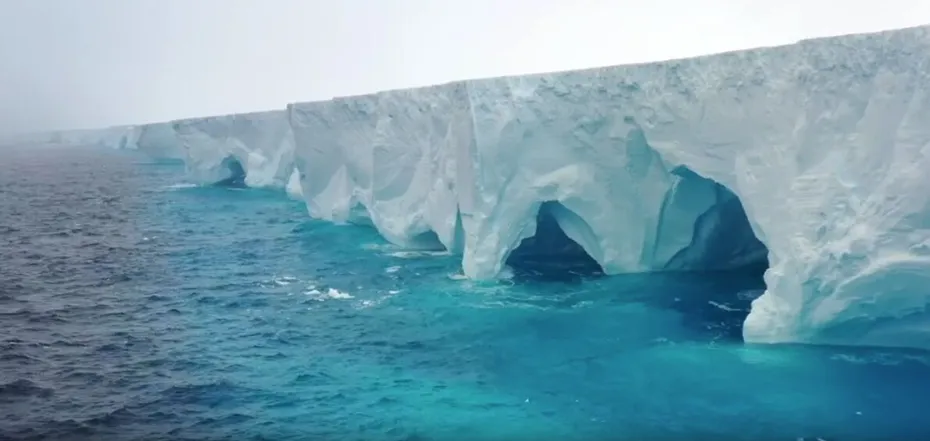
The world’s largest iceberg weighing a trillion tons has started moving again
Scientists have recorded the repeated movement of the world’s largest iceberg. The giant ice block, marked on the world map as A23a, is twice the size of Greater London and weighs almost a trillion tons.
The mega-iceberg had been on the seabed for more than 30 years and suddenly began to rotate in place. Experts from the British Antarctic Survey (BAS) have confirmed that A23a has finally freed itself from its position north of the South Orkney Islands and is beginning to drift in the Southern Ocean, DailyMail reports.
“It is good to see A23a back on the move after periods of being stuck. We’re interested to see if it will follow the same path as other large icebergs that have broken off near Antarctica. And what impact it will have on the local ecosystem,” said Andrew Meyers, an oceanographer at BAS.
According to scientists, the iceberg originally broke off from the Filchner Ice Shelf in Antarctica back in 1986. It then remained at the bottom in the Weddell Sea before beginning a slow journey north in 2020.
In February of this year, the iceberg became trapped in a Taylor column, a phenomenon where rotating water over an underwater mountain traps objects in place, experts say. This caused A23a to spin in place, delaying its expected rapid drift northward.
However, new images taken by space satellites have confirmed that the iceberg has broken free.
BAS experts expect it to continue its journey into the Southern Ocean on the Antarctic Circumpolar Current. This is likely to bring it to the sub-Antarctic island of South Georgia, experts say.
However, warm conditions in this region are likely to cause A23a to break up into smaller icebergs, which will eventually melt, scientists suggest.
Along with the satellites, the mega-iceberg is being studied by researchers aboard the RRS Sir David Attenborough.
“We know that these giant icebergs can provide nutrients to the waters they pass through, creating thriving ecosystems in less productive areas,” said Laura Taylor, a biogeochemist on board the ship, who hopes to study the impact of the iceberg on local ecosystems.
The scientist noted that she did not know what difference specific icebergs, their size, and origin might make in this process.
“We took samples of the ocean surface water behind, immediately adjacent to, and in front of the iceberg’s route. They should help us determine what kind of life could form around A23a and how it affects the carbon in the ocean and its balance with the atmosphere,” added Laura Taylor.


Comments (0)